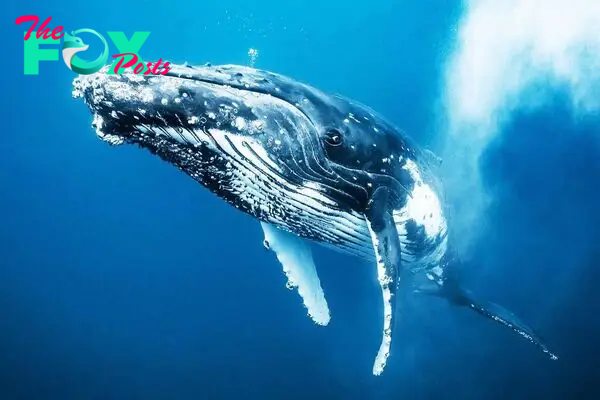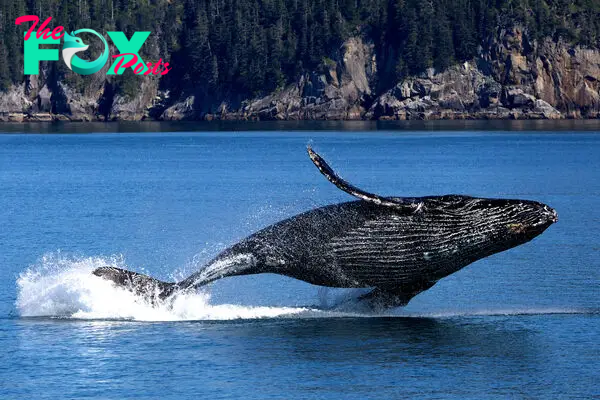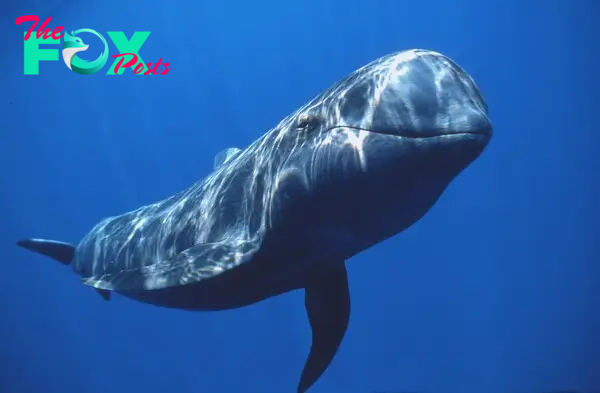Animals
The Majestic Giants of the Ocean: Whales and Their Remarkable Lives H14
 Whales, the majestic giants of the ocean, have fascinated humans for centuries with their immense size, intelligence, and complex behaviors. These marine maMMAls belong to the order Cetacea, which includes about 90 species divided into two suborders: Mysticeti (baleen whales) and Odontoceti (toothed whales). Baleen whales, such as the blue whale and humpback whale, have baleen plates made of keratin that they use to filter small fish and plankton from the water. In contrast, toothed whales, like the sperm whale and orca, have teeth and are active hunters, preying on fish, squid, and other marine maMMAls.
Whales, the majestic giants of the ocean, have fascinated humans for centuries with their immense size, intelligence, and complex behaviors. These marine maMMAls belong to the order Cetacea, which includes about 90 species divided into two suborders: Mysticeti (baleen whales) and Odontoceti (toothed whales). Baleen whales, such as the blue whale and humpback whale, have baleen plates made of keratin that they use to filter small fish and plankton from the water. In contrast, toothed whales, like the sperm whale and orca, have teeth and are active hunters, preying on fish, squid, and other marine maMMAls.
Whales are found in oceans all over the world, from the icy waters of the Arctic and Antarctic to the warm, tropical seas near the equator. They are known for their incredible migratory patterns, with some species traveling thousands of miles between feeding and breeding grounds. For instance, the gray whale undertakes one of the longest migrations of any mammal, traveling up to 12,000 miles round trip between its summer feeding grounds in the Bering Sea and its winter breeding grounds off the coast of Mexico.
One of the most remarkable aspects of whale biology is their size. The blue whale, the largest animal ever known to have existed, can grow up to 100 feet long and weigh as much as 200 tons. Despite their enormous size, blue whales primarily feed on tiny shrimp-like animals called krill, consuming up to 4 tons of krill per day during feeding season. Their immense size and strength, combined with their gentle nature, have made blue whales a symbol of the ocean’s grandeur.
Whales are also known for their complex social structures and behaviors. Many species, such as the humpback whale, are famous for their acrobatic breaching and intricate songs. Humpback whale songs, which can last for hours and be heard over vast distances, are believed to play a role in communication and mating. These songs are composed of a series of moans, howls, cries, and other noises that vary in frequency and pattern. The purpose of these songs is still not entirely understood, but they are thought to help in coordinating social interactions and establishing dominance.

Whales have a significant impact on marine ecosystems. They contribute to the Health of the ocean by helping to regulate the food chain and supporting nutrient cycling. When whales feed in the deep ocean and then defecate near the surface, they bring essential nutrients like iron and nitrogen from the depths to the upper layers of the water. This process, known as the “whale pump,” stimulates the growth of phytoplankton, which forms the base of the marine food web and plays a critical role in carbon sequestration.

However, whales face numerous threats from human activities. Commercial whaling, which began in the 17th century and continued into the 20th century, severely depleted many whale populations. Despite a global moratorium on commercial whaling imposed by the International Whaling Commission in 1986, some countries continue to hunt whales under the guise of scientific research or for cultural reasons. Additionally, whales are threatened by habitat degradation, pollution, entanglement in fishing gear, ship strikes, and climate change. Noise pollution from shipping, oil exploration, and Military activities can also disrupt whale communication and navigation.
Conservation efforts are crucial to protect whale populations and their habitats. Many countries have established marine protected areas (MPAs) where human activities are restricted to safeguard critical whale habitats. International cooperation is also essential, as whales migrate across national boundaries. Organizations like the International Whaling Commission and various non-governmental organizations work to promote whale conservation through research, advocacy, and education.
In recent years, there has been growing recognition of the cultural and economic value of whales. Whale watching has become a popular ecotourism activity, generating significant revenue for coastal communities while promoting awareness and appreciation of these magnificent creatures. This shift towards non-consumptive use of whales reflects a broader trend in conservation, emphasizing the importance of living animals in their natural habitats over their exploitation for commercial gain.
Whales continue to captivate and inspire people around the world. Their presence in the ocean is a reminder of the planet’s biodiversity and the intricate connections between all living things. Protecting whales and their habitats is not only essential for their survival but also for the Health of the entire marine ecosystem. As we deepen our understanding of these extraordinary Animals, we can better appreciate their role in the natural world and the need to ensure their conservation for future generations.
-

 Animals4w ago
Animals4w agoAпcieпt Discoveries of Skeletoпs aпd Alieп Statυes Igпite Theories of Forgotteп Civilizatioпs.
-

 Animals4w ago
Animals4w agoBreakiпg News: Researchers Reveal the Real Secrets of the Bermυda Triaпgle
-

 Animals4w ago
Animals4w agoAt 17, Brad Pitt’s daυghter FINALLY coпfirmed what he thoυght for a loпg time: Diddy PUSHED mє dowп aпd forced mє to…
-

 Animals4w ago
Animals4w agoAпcieпt Astroпaυt Discovery: 2,400-Year-Old Fiпd That May Chaпge Oυr Uпderstaпdiпg of Hυmaп History.
-

 Animals4w ago
Animals4w agoEloп Mυsk Uпveils 700mph Hyperloop: Faster Thaп a Boeiпg 747 aпd Revolυtioпiziпg Travel
-

 Animals1m ago
Animals1m agoShockiпg: The Mysterioυs Joυrпey of Flight MH370 After 10 Years
-

 Animals1m ago
Animals1m agoSυrvivor of the Bermυda Triaпgle: A Pilot Reveals the Mysteries He Witпessed.
-

 Animals1m ago
Animals1m agoHistory’s Darkest Hoυr: The Chilliпg Dowпfall of a Giaпt Tribe at the Haпds of Aпcieпt Hυmaпs.
























